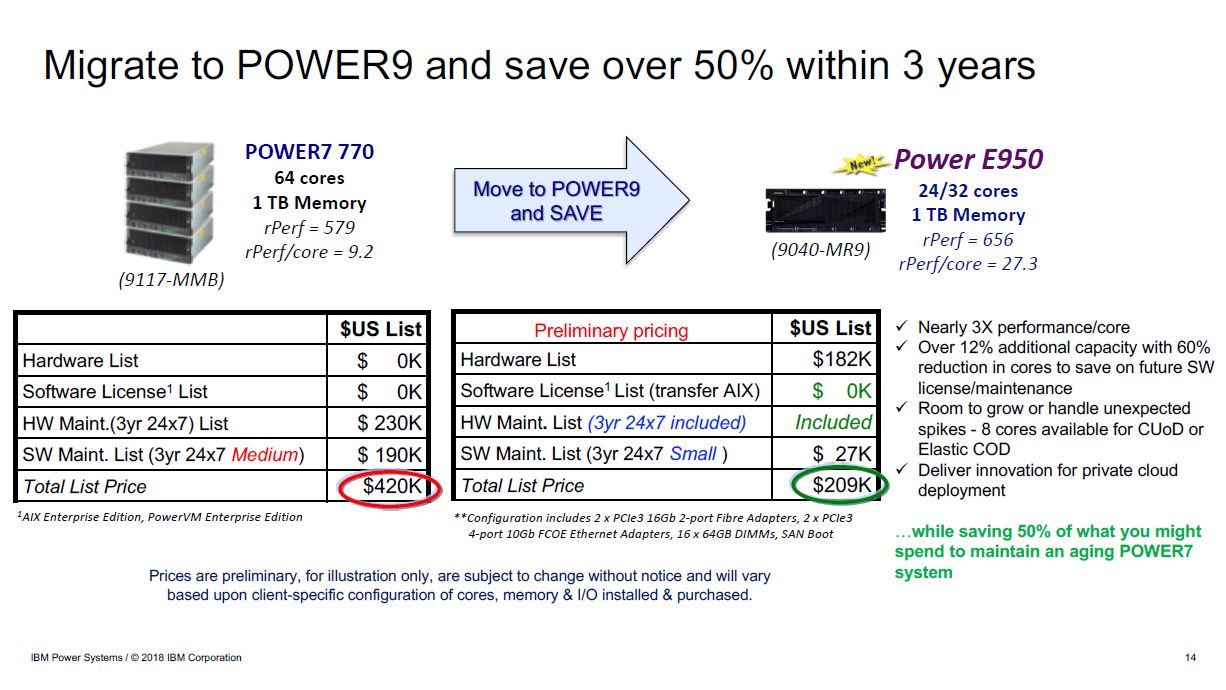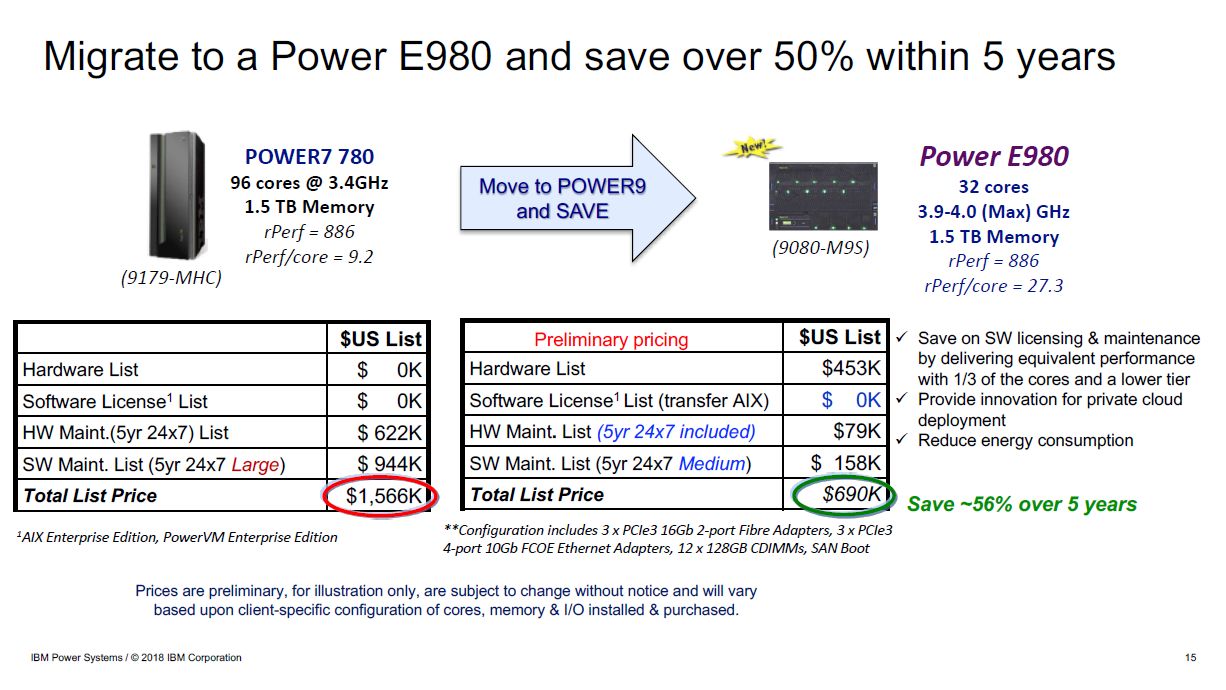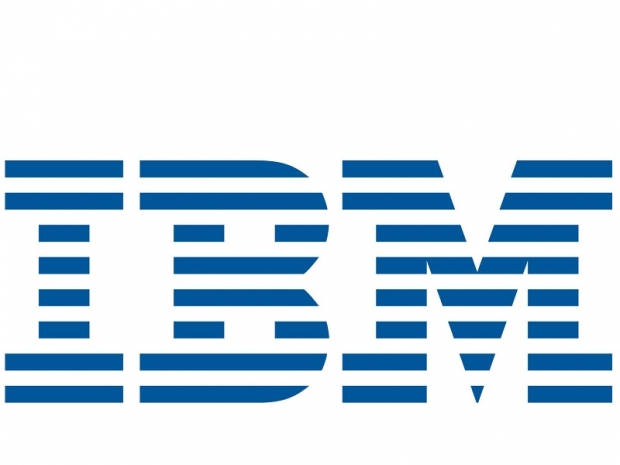Back in May, IBM announced AC922 based machines to target AI and deep learning tasks and the new Power E950 and E980 are targeting incredibly big businesses including government, big banks and the financial sector, oil and bass, energy and utilities, public safety and healthcare. Let's take a moment to think about this. Oil and gas utilities with 80,000 sensors in a facility can produce 15 petabytes of data.
Public safety - just in New York City - generates 520 terabytes of data from surveillance cameras. The energy and utility industry with 680 million+ smart meters produce over 280 petabytes of data while healthcare produces the equivalent of 300 million books of health related data that gets produced, per human, in a lifetime.
Security remains a big concern are there is a likelihood of 28 percent that enterprise data might be breached within the next 24 months with an average cost of data breach in 2017 hitting $3.6 million.
Power Cloud
Power Cloud has a big play in the modern enterprise, whether we are talking about the private or public cloud. IBM has PowerVR and IBM private cloud with Power VC, Power VC Cloud for SDI and KVM with secure and accelerate live migration. Power 9 is cloud ready, as Power VM is built in to scale out systems and Power 8 and Power 9 support enterprise pools and run seamlessly Linux workloads in the PowerVC private cloud.
The existing Power 9 architecture delivers 2X performance per core compared to a X86 Xeon S, 2.6 times memory per socket, and 1.8 times memory bandwidth per socket. That's not all, as Power 9 offers 2X I/O bandwidth and twice the performance in Crypto engines.
IBM is launching Power Enterprise Systems in Q3 2018, the Power E950 for smaller customers and the Power E980 for bigger players. Power systems for the enterprise combine cloud management with security to cloud and Power 9 performance to enable the most data intensive, mission critical workloads, IBM claims.
99.9996 percent uptime
IBM Power System has been ranked the most reliable for 10 straight years delivering 99.9996 percent uptime.
The Power 9 Eneprise E950 MTM 9040 MR9 comes in 4U form factore and has 2S and 4S configurations. This enables 32, 40, 44 and 48 cores as well as 128 DDR4 DIMM models with a maximum 16TB. The system comes with a built in IBM Power Virtual machine and has 10 slots of PCI Gen 4. It runs AIX and Linux.
The bigger brother, called E980 1-4 modes MTM 9080-M9S, comes with 5U system node and a 2U system controller unit with 4S processor sockets per node. Up to 192 cores can be added to such systems with up to 128 DDR4 CDIMMs and up to 64TB memory.
This system also supports built in IBM Power VM and up to 32 PCIe Gen 4 slots for very fast expansion accelerators. The E980 runs AIX, IBM I and Linux.
Power E950
The Power E950's notable enhancement includes more efficient processor communication, 4X memory capacity up to 16 TB per system and 4TB per socket to improve the performance of large scaling in memory data base applications. The E950 2X on chip crypto engines protect data at rest and in motion. The I/O infrastructure designed for PCIe Gen 4 provides 2X I/O bandwidth and concurrent maintenance to improve throughput and help maintain service levels, IBM claims.
The four integrated NVMe drive slots provide faster and more compact storage, while the system RAS features are improved with enhanced DC-DC regulator redundancy and full fan concurrent maintenance to provide more reliable power and cooling. Last, but not least, the Power E 950 offers improved cost and serviceability with options for 0 – 2 concurrently maintainable internal storage controllers, IBM claims.
Power E980 for big players
Power E980 offers enterprise class Power 9 processors that provide fast response time and increase system stability. Large scale systems throughput will increase and offer a 4X increase in internode bandwidth. The 2X memory capacity with up to 64TB per system can improve the performance of large scale in memory data base applications.
Just like the E950 there is a 2X IB with PCIe Gen 4, 4 integrated NVMEe slots per CEC. System RAS features are improved with support for Guided FSP and SMP cable installation as well as dynamic de-allocation of SMP cable, ½ bandwidth mode and concurrent repair of SMP cabling in the event of a failure in SMP cabling components. A new distributed system clock design eliminates discrete clock cabling from each system drawer to the system control unit.
Upgrade to Power 9 can save money
IBM also promises that with the migration to Power 9 you can save over 50 percent within 3 years. The Power 7 770 machine with 64 cores, 1TB memory and relative performance of 579 / relative performance per core of 8.2 cost $230,000 in hardware maintenance in three years 24x7 while the software maintenance for the same period should stuck up to $19,000, a total of $420.000 for maintenance.
Power E950 offers 24 to 32 cores with 1TB memory and relative performance of 656 or relative performance per core of 27.3. The hardware would cost $182,000 but the hardware maintenance for three years 24x7 comes included and software maintenance for the same period will end up at $27,000 with total cost of ownership at $209,000.
This amounts to nearly 2X performance per core and over 12 percent additional capacity with 60 percent deduction in cores to save on the future software licensing and maintenance. This might be a great play for a private cloud deployment.
Migrating to Power E 980 can save you 50 percent within five years, Big Blue claims.
Every E950 and E980 system comes with PowerVM and Cloud Power Virtual Cloud manager, Cloud Management console (CMC) VMware vRealize suite integration. This, says IBM is all "carefully tailored" for the Power cloud native solution with IBM cloud private as well as dynamic resource management across multiple Power cloud servers with enterprise pools.
The Power 9 enterprise stuff including E950 and E980 offer simplified multi cloud delivered with security and built to scale performance while staying affordable and over all reliable, continues IBM.




